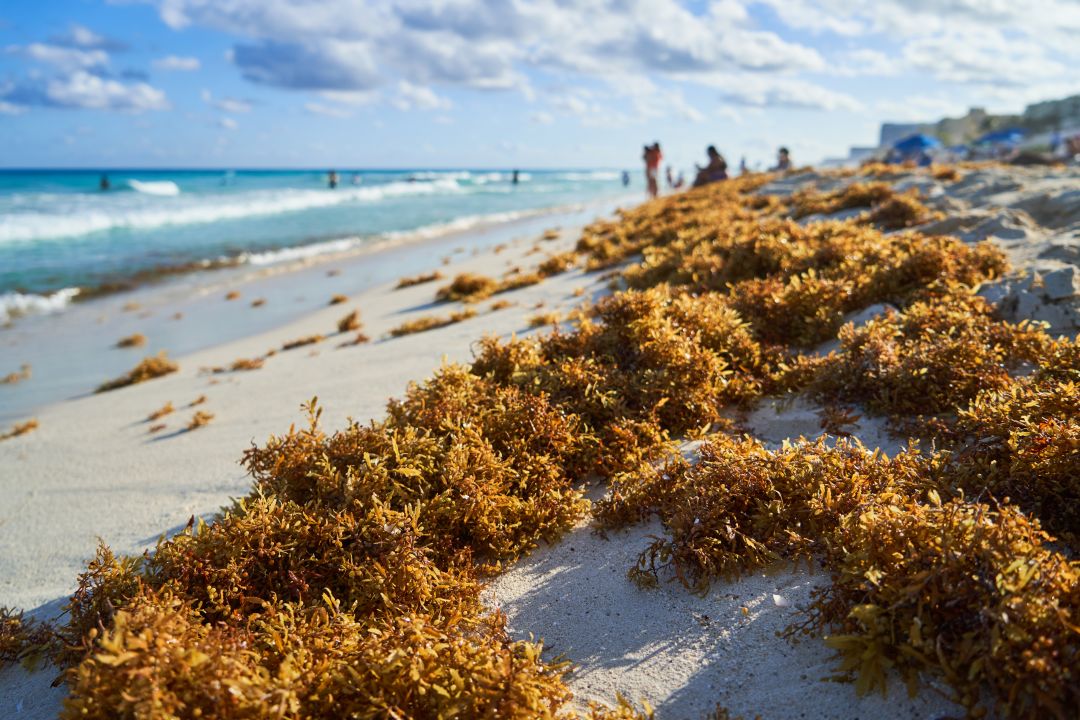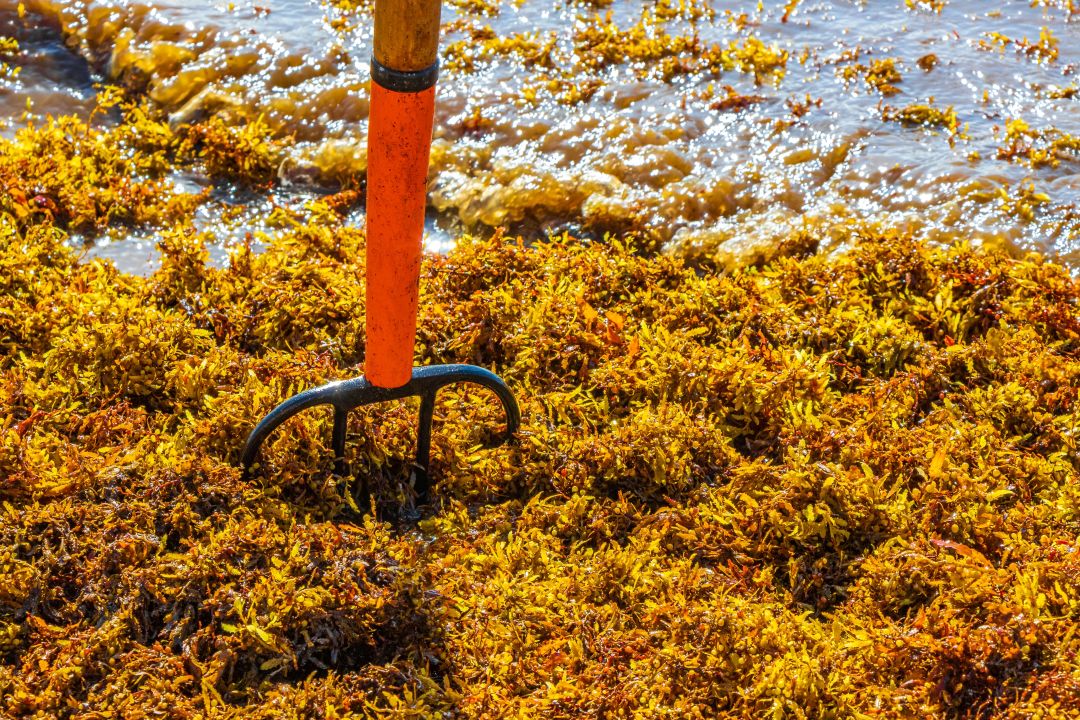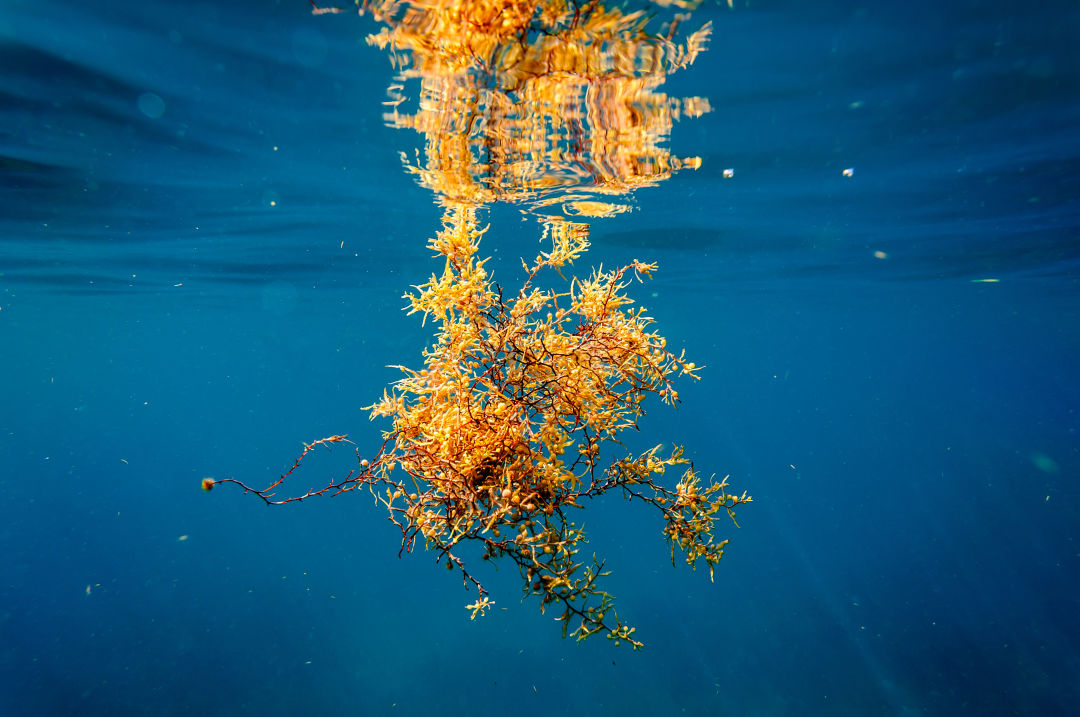A Massive Sargassum Bloom Is Headed For Florida's Beaches

Sargassum piles up on a Caribbean beach.
Florida just can’t seem to catch a break.
Just as the massive red tide bloom that’s been choking our waters since October 2022 begins to wane, a 5,000-mile-long sheet of seaweed in the Atlantic Ocean threatens to stink up our beaches along the Gulf of Mexico.
The seaweed—also known as sargassum—is a naturally occurring brown macro algae that floats just beneath the surface of the water, thanks to built-in air pods that keep it buoyant. It's home to countless marine life and it sucks up carbon from the atmosphere. It’s not uncommon for it to drift its way to our beaches from time to time.
The trouble is, this year’s sargassum bloom is abnormally large.
The Great Atlantic Sargassum Belt resides between the Gulf of Mexico and West Africa, and this year, it’s four times larger than ever. It’s so big, in fact, that you can see it from space. It’s plagued Caribbean islands for months. Now it’s headed toward Florida.
"We’ve known about this for a little while,” says Dave Tomasko, executive director of the Sarasota Bay Estuary Program. “There have been bad sargassum blooms in the past, but this is the biggest one we’ve ever seen, and it’s got a lot of people worried.”
So what could this abnormal amount of seaweed have in store for us? Our bays are already in rough shape thanks to battered seagrasses, but they might be spared by this latest algal invasion. According to Tomasko, there aren’t major concerns about sargassum harming seagrasses by blocking out sunlight.
“Sargassum normally does not accumulate in places like Sarasota Bay or Tampa Bay,” says Tomasko. “The biggest problem has been around the resort beaches in the Caribbean and Southeast areas, like Miami Beach.”
The question of when the sargassum will arrive on the Gulf Coast and in what quantities is still unclear. The good news for us is that it won’t be as severe as in other places, although we can still expect some to wash up on our shores.
“It’ll depend on the currents and where the wind is blowing when the largest mass comes around,” Tomasko says.

Sagarassum buildup in Playa del Carmen, Mexico.
When it does end up here, Sarasota County officials say that while staff does not have projections for sargassum, “the situation will be monitored and we will be ready to respond if and when it is necessary.” The same contractor who handles hurricane storm debris and red tide cleanup will likely be used for sargassum cleanup, as it can scale up or down quickly, based on need.
No matter what, when sargassum arrives on beaches en masse, it’s no fun at all. Not only does it blanket our shores, rendering them impassable, it’s terribly unpleasant to swim in. Tomasko hopes that local governments won’t do what Miami Beach has done in the past, which is to plow the seaweed into the sand.
“It’s a really bad idea to bury decomposing plants in the sand,” Tomasko says. “It will stain our sand and make it gross to walk on.”
Plus, sargassum breaks down very slowly. Unlike other organic material that composts easily, sargassum has a lot of secondary compounds, like phenolic acid, that makes decomposition difficult. It doesn’t help that nothing eats sargassum, either. And when it finally does begin to break down, it starts to cause all kinds of problems.
“When sargassum decomposes in the water, it can use up all the oxygen,” Tomasko explains. “When it does that, the bacteria in the water will switch to using sulfate. When that happens, sulfide is produced and it will smell like rotten eggs.” All the sulfide in the air can cause respiratory issues, eye irritation and headaches; one study has also linked it to an increased risk of serious pregnancy complications. Back in the 1970s, during one particularly nasty macro algae bloom in Tampa Bay, the high concentration of sulfide in the turned people’s houses gray and tarnished their silverware.
Sargassum also disrupts native wildlife, particularly sea turtle nesting, which runs from May into October. “Turtle hatchlings are not going to be able go up on the beach because they could have a couple of feet of rotting sargassum [to deal with],” Tomasko says. Sargassum will also negatively impact any animal that uses the shore to eat, like sandpipers.

Sargassum is a naturally occurring brown macro algae that floats just beneath the surface of the water, thanks to built-in air pods that keep it buoyant.
Image: Shutterstock.com/Oliver S
While it’s unclear what exactly caused this year’s massive sargassum bloom, scientists believe it’s a combination of warming sea temperatures and nutrient discharge into the ocean. “This sargassum bloom isn’t because of something Floridians did with their septic tanks,” Tomasko says. “By the time it hits our beaches, it’s probably more strongly influenced by Brazilian Amazon deforestation and runoff from fertilizing soy farms. But an awful lot of things are growing because we are making the waters warmer, and algae can grow quicker when it’s warmer. It’s just not as cold as it used to be.”
Warming water is one of the reasons our red tide blooms are getting worse and lasting longer, too. “Climate change is not a future scenario,” says Tomasko. "It’s happening right now. We are living through the early parts of climate change.”



